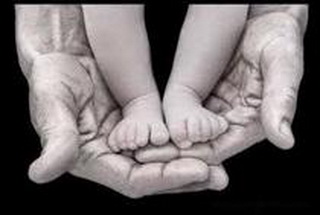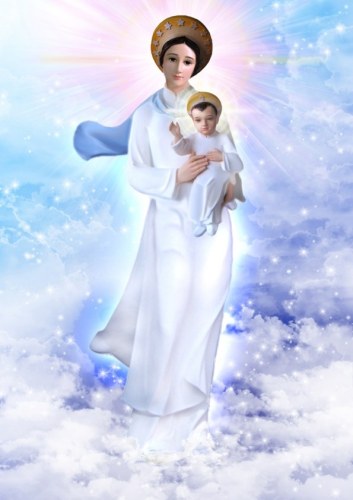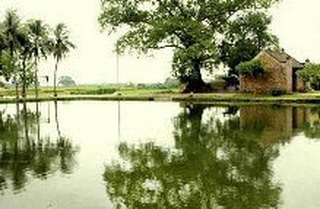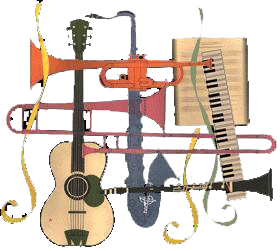A French Lycée in Danang, Central Viet Nam (1950’s)
Dual system of education in Vietnam in the 1950’s.
All my brothers and sisters had been going to Catholic schools in Huế where instruction was conducted in French, with a rigorous curriculum.
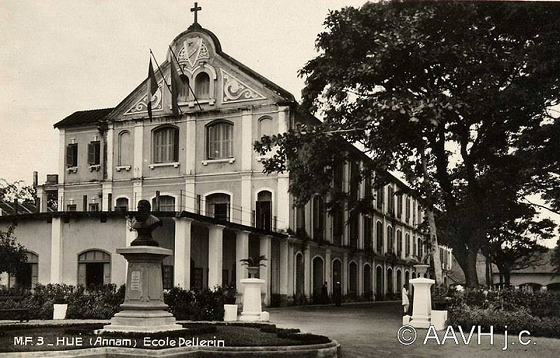
Fig 1: The Pellerin School for boys was founded in 1904 by the Lasallian Catholics Brothers.(1). (Pellerin was a 19th century French Bishop )
“Institut de la Providence’ and Ecole Pellerin (Pellerin High School) were major catholic institutions responsible for the education of the local, and to some extent, national elite for many decades. There had also been a secular French school, Lycée Français de Huế, run by French government. After the French’s defeat at the pivotal battle of Dien Bien Phu, it was closed in 1955. As the French government wanted to maintain a strong cultural influence in its former colony, a kind of “educational diplomacy” after military defeat, it made the effort to keep open a few French schools in South Vietnam (Republic of Vietnam under Premier Ngô Đình Diệm) and for a few years, one school even in communist North Vietnam.
The faculty and students from the Huế's Lycée moved to Danang, also called Tourane by the French, and a former French concession with a strong French imprint. (Danang had more French influence, was occupied briefly by the French in 1858, was ceded to France in 1888 by the Hue court, and subsequently functioned as a French concession beyond the jurisdiction of the protectorate until Vietnam’s independence in 1954).(2)

Fig 2: Institut de la Providence in Hue, Vietnam, (in Vietnamese: Trường Thiên-Hữu or Thiên-Hựu), was founded in 1933 by the Redemptorists (Dòng Chúa Cứu Thế) (3)
By 1957, President Ngo Dinh Diem had been in power in South Vietnam for 3 years and was trying to establish a national education system based only on Vietnamese language. However, the use of Vietnamese was until then limited to high school level, much of the university level education was done in French. Therefore, students who underwent a high school curriculum were at a big handicap when they had to compete for a slot in very competitive professional schools like medicine or architecture. Once admitted, they also had a very hard time keeping pace in a foreign language that they did not know thoroughly. There were then good reasons for me to leave home, go to Danang and apply to the College Francais de Tourane for an education experience in French. I passed the entrance exam.
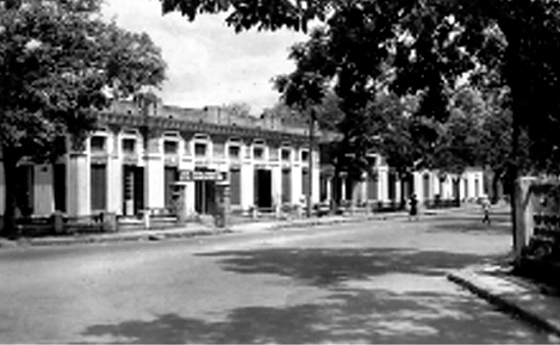
Fig 3: Lycee Francais de Hue, a secular French high school, was closed in 1955.
French Secular Education.
My father probably hesitated a little in letting me go at an early age of ten. He asked me what I thought about it, it seemed that unknowingly I gave him the right answer, that I would miss home but I had to do what I had to do.
Besides my young age, there was also some suspicion regarding the nature of the education that I was going to get from a secular French institution. The Catholic Sisters at my sister’s Jeanne d’Arc High School (4) were wary of French secular education and predicted that I would leave home “as an angel and come back as the devil.” That dramatic prognostication might be understandable if one considers it from a nun’s religious point of view, as French public education was humanistic, very liberal and did not include religious teachings.
Danang in the 50’s.
I still remember the day I went to Da nang to take my entrance examination. It was the first time I had ever been out of Hue, my native city. Danang was more exposed to the outside world, more modern than Hue, with more restaurants and shops. People there also spoke Vietnamese with a different accent. My father’s secretary was responsible for taking me to Danang.
First step away from home.
Soon after the exam, I had to leave home and start my septieme speciale, a transitional fifth grade year that would help me streamline into a totally French curriculum, a 2-year process. I still remember the day my father brought home my first suitcase. I never could have predicted the endless travels that would ensue later in my life. It was a small suitcase that my father tied on the rear seat of his bicycle when he came home that night from his office. It was made of modest, light pinewood, covered on the outside with painted tin. On the inside there was a lining of fabric glued over wood. That kind of luggage manufactured in Cholon, Saigon’s Chinatown, was very popular in Hue at the time. My mother packed my belongings, mostly things from a required list sent out earlier by the school. There was a wool blanket that my mother bought from a neighbor who had won it as a prize at a fair lottery. There was a whitish cotton military mosquito net given by my brother in law. Pajamas were required too (at home, we used to wear to bed the same daytime clothing). My parents went with me to Danang on my first trip and stayed at the Grand Hotel de Tourane that overlooked Song Da River. We went to the school for registration then spent the night at the hotel. The next day, I slept in my new home away from home.
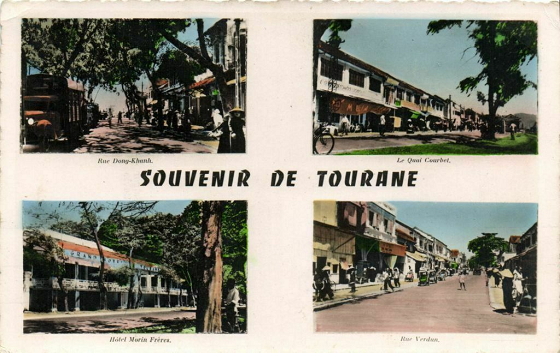
Fig 4: Images of Tourane (Danang) during French colonial period.
The French High School.
The French name of my high school meant the French High School of Tourane. In French, the word "college” usually does not mean a university level institution. Around 1963, it was renamed Lycee Blaise Pascal (a lycee had a 12th grade or "classe terminale" which a college did not have). At the end of high school (after completion of the classe terminale), we took an exam to get the diploma of “Baccalaureat”, which again was not a university degree like the BS or BA in the American system.
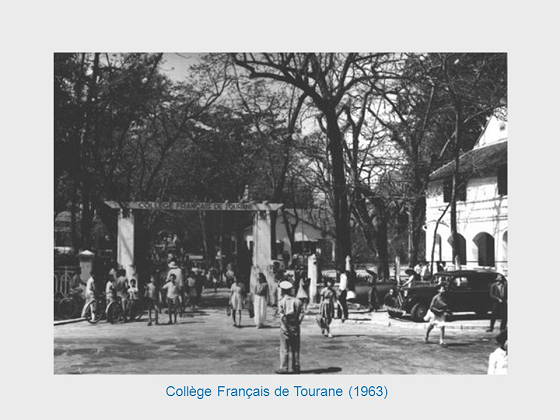
Fig 5: The College Francais de Tourane in 1963, on Doc Lap (Independence) Street, Danang at the beginning of the post colonial period.
My school had about 500 students, ranging from 12th grade to first grade. Each class had about 15 to 25 students. Most teachers came from France and lived in a compound nearby on Quang Trung Street, a few had apartments inside the school. The Directeur or Principal had a separate villa next to the school, at the intersection of Doc Lap (Independence) and Quang Trung Streets. Most students were commuters: the younger ones were brought to school by their parents on motorbikes or less frequently by car. Most high-schoolers rode a bicycle or walked to school. About thirty of us were “internes”, living inside the school itself, away from home. The school occupied a whole large block of the city of Danang. We were told that formerly it was a military fortress ( the Điện Hải Citadel) before the arrival of the French at the end of the nineteenth century. Nguyễn Tri Phương, a famous Vietnamese general and patriot, had his quarters here when he was responsible for guarding the harbor area of Danang. Later it was transformed into a French military hospital. After the French lost Vietnam as a colony in 1954, it became the French college.
We could still see a large moat that divided the campus into two parts: the front part with the classrooms, the science laboratory, the yards where children played during recesses and the administrative buildings. The part in the back of the campus, on its West side was much older, with two large main buildings built in French colonial architecture. They were joined together in the middle with a hallway. White stucco columns bordered the corridors that surrounded high-ceiling rooms. Those rooms were used as dormitories for the internes.
On the ground floor, there was a dining room in the building on the left. In the building on the right there were a room for judo training with a large mat and locker rooms (Mr. Nedelec was the founder and only instructor of the judo class that lasted only for a short time; he was also our teacher of sixieme speciale ). The bathrooms were in a separated small addition in the back. We had to cross a small yard whenever we wanted to use a bathtub or take a shower. At the time, those facilities were much better than what most of us had at home, however I still remember the chills I felt on winter days when we just came from a bath and ran back to our dormitory.
At night it might be a little scary for the younger internes. The toilets were about 60 feet away, also connected to the main building by a T shape corridor. I mention the distance because it was quite a long stretch of running for anyone who had diarrhea in the middle of the night. Add to that the stories about ghosts that haunted the place from its military hospital past, the sounds of giant geckos and the occasional snake dangling from the ceiling of the hallway. The toilets were very old and water leaking made a constant background noise. It was the siege à la turque that you had to squat on. (Last time I saw a similar toilet seat was in 1998 in Singapore, a much more high tech version, with infrared beam automatic flushing.) The old sewage pipes had been broken a long time ago, so that when you flushed the water on one side, the person next-door was going to receive the whole exhaust of air coming from the septic tank.
Isolation from the world.
I want to recount all these minute, insignificant details that come to my mind now as small pieces of a mosaic of a time past. When we think of all the amenities available to a high school student in America, it is hard to imagine how simple our high school was. We were not allowed to read newspapers in studying rooms or in the dormitories. There was no music, no telephone, no pharmacy, no nurse, no television (of course), no library, no counselors. After classes, except for 30-45 minute breaks, there was always studying time, until bedtime. The internes were not allowed to cross the bridge that connected us to the other part of the campus. For years, we were not allowed to have a peek of the street scene in front of our school, or buy anything from the peddlers who went around selling their fares of Vietnamese noodles or rice cakes..
On weekends only, we were allowed to take a trip supposedly to our “correspondant” in town. A correspondent was some relative or family friend who would assume the responsibility of accepting us to their home for half a day or so and who would sign our “Permission de sortie” slip (Permit to get out slip), issued and signed by our stocky, debonnaire, surveillant general Mr. Menguy, when we are due back. I often went to my brother-in-law’s home. He was a career military man who stationed in Danang for years. For a while, my sister and their children lived on a military housing compound on Quang Trung Street, just across the street from our place.

Fig 6: A movie theater in Danang (in 1965 and as it appears in 2016, more than 50 years later).
Most of the time however, I only took the opportunity to go to a movie, something made by Hollywood and dubbed in French with Vietnamese subtitles. The titles that I still can recall are: Picnic (with Kim Novak), La Fièvre dans le Sang (Rebel without a cause), Mirage de la vie (An Imitation of Life, with teenage star of the time, Sandra Dee) , La Fontaine des Amours (Three Coins in a Fountain). Văn Cầm was the name of one of the two movie houses on Doc Lap Boulevard. There was also a small bookstore named Sông Đà on the same street, where we could browse through the magazines and books, either in French or in Vietnamese, or buy the Japanese made fountain pen (Pilot) and Waterman ink bottles imported from France. Nearby, there was the Centre Culturel Francais which was much larger, nicer and better staffed than the main city library itself. There I could read French newspapers and magazines like Le Monde, Les Nouvelles Littéraires, and borrow French books.
After that, I could relish a milkshake (sữa sóc) at an ice cream parlor (Diệp Hải Dung), a clean, popular place where there was nice background music, quite a rare treat for us who lived in an environment totally devoid of any kind of entertainment. Once in a while, I just got a snack of some Chinese food sold from a cart by a peddler, thịt bò khô (beef jerky mixed with finely chopped green papaya in nước mắm/fish sauce), or chè sâm bổ lượng, a sweet concoction of different algae, longan pulp and beans stuffed in scraped ice (nước đá bào). I relished those treats because they were rare in Hue where I came from, probably due to a relative absence of Chinese commerce in that city. If, for any minor infringement of discipline, like making noise during sleeping time or coming back late, our right to the outside world was suspended for that weekend. We then had to stay inside, studying.
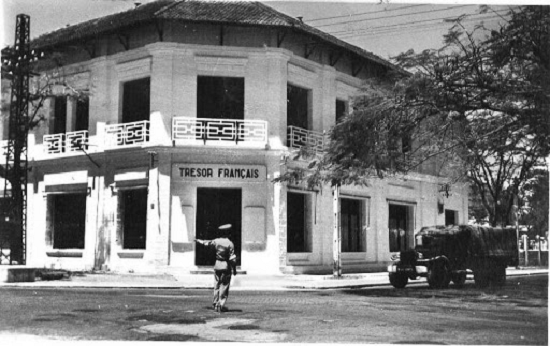
Fig 7: This building with the sign “Tresor Francais” (French Treasury) during the colonial period would later be used as the French Cultural Center after Vietnam’s independence in the late 1950s.

Fig 8: Rendering of future Dien Hai Citadel Plaza in a Vietnamese architectural journal (Thiết kế không gian kiến trúc cảnh quan Quảng trường thành Điện Hải)
(Source; tapchikientruc.com.vn)
Epilogue.
In the last few decades, all structures making up the former old French hospital and the Lycee Blaise Pascal were demolished. Recently, the former Vietnamese Citadel of Dien Hai on which they were built was recognized as a national monument. The Citadel will be fully restored to its appearance before the French conquest and become the centerpiece of a large plaza area serving as the cultural and administrative core of the city .(5)
Notes:
1)The order was founded in France by a priest named Jean-Baptiste de La Salle (1651–1719), and now based in Rome, Italy. It has about 4,000 Brothers, who help in running 1,000 education centers in 79 countries with 850,000 students, together with 90,000 teachers and many lay associates. Currently there is no catholic schools in Vietnam.
2) "Ngày 17 tháng 8 năm 1888, Tổng thống Pháp ký sắc lệnh thành lập ba thành phố ở Việt Nam là Hà Nội, Hải Phòng và Đà Nẵng. Ngày 3 tháng 10 năm 1888, Vua Đồng Khánh buộc phải ký một đạo dụ gồm 3 khoản quy định rõ "...Đà Nẵng được chính phủ Đại Nam kiến lập thành nhượng địa Pháp và nhượng trọn quyền cho chính phủ Pháp, và chính phủ Đại Nam từ bỏ mọi quyền hành trên lãnh thổ đó". Theo phụ đính của đạo dụ này, năm xã của huyện Hòa Vang gồm Hải Châu, Phước Ninh, Thạch Thang, Nam Dương và Nại Hiên Tây nằm bên tả ngạn sông Hàn được cắt giao cho Pháp để lập "nhượng địa" Tourane với diện tích 10.000 ha." (Wikipedia)
3) The Congregation of the Most Holy Redeemer (Latin: Congregatio Sanctissimi Redemptoris; CSsR),[1] commonly known as the Redemptorists, is a religious congregation of the Catholic Church, dedicated to missionary work and founded by Alphonsus Liguori at Scala, near Amalfi, Italy, for the purpose of labouring among the neglected country people around Naples. Members of the congregation are Catholic priests and consecrated religious brothers and minister in more than 100 countries. (Wikipedia)
4) Jeanne d’Arc (1412-1431) (in English: Joan of Arc) was a peasant girl living in medieval France, believed that God had chosen her to lead France to victory in its long-running war with England. With no military training, Joan convinced the embattled crown prince Charles of Valois to allow her to lead a French army to the besieged city of Orléans, where it achieved a momentous victory over the English and their French allies, the Burgundians. After seeing the prince crowned King Charles VII, Joan was captured by Anglo-Burgundian forces, tried for witchcraft and heresy and burned at the stake in 1431, at the age of 19. By the time she was officially canonized in 1920, the Maid of Orléans (as she was known) had long been considered one of history’s greatest saints, and an enduring symbol of French unity and nationalism.
5)https://www.tapchikientruc.com.vn/chuyen-muc/kientruc-xahoi/quang-truong-thanh-dien-hai-tuong-lai-ve-mot-noi-chon-dang-nho-cua-da-nang.html
Hien V. Ho
August 23, 2020
(This is an edited and illustrated excerpt from the book “ The Mayflowers of 1975”, a collection of personal stories of dozens of Vietnamese physicians, pharmacists and their relatives who lived through the events that changed their lives in April 1975)

